Some canine behavior problems can be easy to fix while others are more serious. It is important for you, as a dog owner, to demonstrate correct dog behavior training, whether you adopt them as a puppy or later in life. Let’s take a look at the 10 most common canine behavior problems, and how to correct them.
1. Excessive Barking
Dogs will be dogs, and most dogs will bark, whine and howl at times. Certain breeds bark more than others while the Basenji doesn’t bark at all. Dogs actually bark for many different reasons such as:
- To warn, alert and protect
- To “speak” to humans & other dogs
- When excited or during play
- To seek attention, relieve stress, anxiety or boredom
If you are observant you can often determine why your dog is barking and associate that with the different barking sounds it is making. However, when excessive barking disturbs sleep or work it becomes a behavior problem that must be dealt with using proper dog behavior training. The solution is teaching your dog when to bark and when to be quiet. Most trainers use Speak and Quiet commands. This process requires consistency and patience and will be much easier if training starts early. So how do you deal with excessive barking? First, determine the cause of your dog’s excessive barking. Work to remove the source of the barking when possible and replace it with something that captures your dog’s attention without barking. Some things you can do include:
-
- Avoid leaving the dog alone for long periods of time
- Avoid shouting at or punishing your dog for barking
- Get your dog’s attention by using a clap, whistle or clicker
- Follow this with one of the obedience commands like sit or down
- When a dog is barking for attention, do not use food, treats or comforting hugs as this only encourages and rewards the behavior
- Consult with a professional trainer if your efforts are not producing results.
2. Chewing
Chewing is a natural behavior for all dogs. Hence, destructive chewing is one of the most common behavior problems most owners have to deal with. Why do dogs chew?
The most common reasons are:
- Puppies explore their world using their eyes, nose, ears and MOUTHS.
- Puppies chew to relieve teething pain
- Puppies chew to calm themselves and relieve boredom
- Destructive chewing occurs when a dog is anxious as often seen with separation anxiety
- Destructive chewing also occurs when owners fail to train young dogs not to chew on objects that are meant to be protected. If you catch your dog chewing the wrong thing, quickly correct him with a sharp noise. Then, replace the item with a chew toy.
Please take note; dogs do not chew out of spite. They don’t understand that your favorite shoe is any different than their favorite chew toy until you teach them otherwise.
When your dog chews one of your favorite possessions, it’s important that you do not physically punish the dog. Punishment only increases stress levels and anxiety, which in turn increases their need to chew. When caught in the act, use corrective terms like “NO” or “OFF”, then redirect by offering a chew toy instead along with some praise. Praise should also be used anytime your dog selects an appropriate chew toy over the pillow on the couch.
When all else fails and your dog keeps going back to the same object you can use an aversive like bitter apple spray. Remember that dogs will be dogs and they may have a relapse in judgement even when after proper dog behavior training. When this happens simply begin at the beginning reinforcing good behavior over the bad.
3. Digging
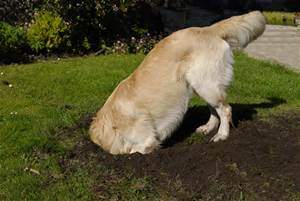
- Natural breed instincts
- Nesting behavior or to cool off
- Hiding their possessions
- Escaping from or gaining access to an area
- Boredom, anxiety or fear
- Burning off excessive energy
If you can determine the cause it will help you develop a method for eliminating the behavior. Do not leave chronic diggers outside without supervision. A well-exercised dog will not need to dig in order to drain off extra energy. If your dog is one of those who loves to bury their possessions, do not allow them to have their toys outside unless you are playing with them.
Some trainers advocate providing dogs that are driven to dig with a place of their own, like a sandbox where digging is permitted. This will require extra dog behavior training in order to assure that the digging only occurs in the pre-approved place.
4. Begging
In the wild dogs hunted for food when they were hungry and needed to feed their young. Today, our domesticated dogs rely directly on us to feed them, which can lead to begging. Begging is not tolerated in the wild pack but is often encouraged in our attempts to further bond with our dogs. Today’s dogs have even developed a look that is hard to resist when they want that extra treat or food from the table.
In all of my years, I have never seen an overweight or obese wild dog. So what has happened to our domesticated breeds?
All of the extra love in the form of food has created an obesity problem in our canine friends. So if you really want your dog to be as healthy as possible, don’t just resist their attempts at begging– teach them not to beg using proper dog behavior training.
As the leader of the pack, only let your dog be present while you eat if they are quietly laying down. If begging begins, remove the dog to another area of the house. When feeding your dog I recommend making the dog sit until you give it the command to eat. Low-calorie treats can be used to reinforce positive non-begging behavior during the day.
5. Chasing
Many of us have experienced the dog that comes tearing out of the driveway towards your moving car causing a brief moment of terror. This is a dog who’s natural predatory chase instincts have taken over in a big way. Such dangerous behavior should be immediately addressed using the following guidelines:
Train your dog on-leash not to become overly excited around other dogs, joggers, bicycles or cars. This can be done by your remaining calm and using commands such as “Sit” or “Stay” when potential triggers are close by.
When off-leash, train your dog to COME when called. This can be done using a whistle or noise-maker to get your dog’s attention.
When outside with your dog, remain alert, and watch for potential chase triggers. Keep your dog’s focus on you to prevent them from chasing something that might result in serious harm.
6. Jumping
Dogs jump up for many reasons. Puppies jump up to reach and greet their mothers, which may carry over when greeting people. Dogs may also jump up in an effort to exert dominance or to seek attention.
In our attempts to end this behavior many methods have been used:
- Grabbing the dogs paws
- Pushing the dog down
- Loudly saying DOWN
- Yanking on the leash or collar
All of these are confusing to the dog as it is actually acknowledging your dog’s effort to seek attention. A better method requires that you simply turn away from the dog and ignore it. When the dog calms down and doesn’t jump up as you approach, give the command to SIT and then calmly reward the dog with praise and a treat. The “Sit” command can be used when returning home and your dog is approaching. If it is not OK for your dog to jump on you then it should not be OK for him to jump on other people as well. Positive dog behavior training can be demonstrated through positive reinforcement so that they understand that four feet on the ground or sitting is the proper way to greet everyone.
7. Inappropriate Elimination

Urination and defecation in the home has caused many dogs to be surrendered to a shelter. Training your dog to eliminate only in appropriate places can do a lot for making your pet a welcome member in your home, public places, and the homes of others.
It is not uncommon for puppies, even when house trained, to have an accident when excited or left too long without being taken out. Some senior dogs may become incontinent (unable to control their urine or feces) as they age. When you are unsure about the cause of an adult or senior dog’s sudden change in elimination behavior you should see your veterinarian in order to rule out any health problems, as many can be easily treated.
Non-medical inappropriate elimination not associated with inadequate housebreaking can be due to any of the following:
- Territorial marking
- Submissive or excitement urination
- Anxiety and fear
- Seeking attention
Inappropriate elimination behavior requires behavior modification. Consulting an animal behaviorist or competent trainer may provide the assistance you need to control the issue. Punishment of any kind is not warranted. Instead, take them outside frequently throughout the day and give them plenty of opportunities to eliminate.Proper dog behavior training entails giving your dog immediate praises or treats when they relieve themselves in an appropriate location.
8. Separation Anxiety
For those of you who have experienced owning a dog that develops separation anxiety; you have my deepest sympathy. Separation anxiety is a disorder that causes dogs to panic at the idea of being left home alone. The panic is so overwhelming that when you leave, dogs tend to bark like crazy, inappropriately urinate and defecate, and do as many other destructive things. When you return home, their greetings are often frantic.
Signs of true separation anxiety include:
- Your dog wants to be near you or touching you
- Your dog follows you around constantly
- The dog anticipates your leaving and becomes very anxious
- The unwanted behaviors usually occur in the first 15 — 45 minutes after you leave
True separation anxiety is stressful for both dogs and owners, especially because typical obedience training will not prevent separation anxiety nor will it work to decrease the anxiety. Treatment will require behavior modification and desensitization programs that gradually let your dog get used to being left alone. Certain medications or supplements may also support overall efforts to alter the behavior.
Desensitization Dog Behavior Training
First, rule out boredom that can also result in excessive barking and destructive chewing. Increase playtime, exercise and mental stimulation. If these things do not help then separation anxiety is the probable cause and further steps need to be taken.
Dogs have a way of knowing when you are about to leave. Their anxiety may begin with you getting up and going through the things you do to get ready and build to a full panic by the time you leave. You may need to alter your routine in order to change their behavior. Keys jingling or the act of putting on your coat are clear signs that you are leaving. Try getting your keys or going outside but, immediately come back in and calmly eat breakfast or watch TV. You dog’s anxiety may ease considerably over time.
You should also incorporate the habit of ignoring your dog before you leave instead of giving him extra attention. Do the same when you return. Attention, praise and treats can be given when the dog begins to accept your coming and going calmly. For mild to moderate cases of separation anxiety, these steps may be enough to ease your dog’s anxiety. For more severe cases, the dog will need additional desensitization.
Next, begin leaving and then coming right back. You can increase the time being gone when the dog shows no further signs of anxiety (panting, pacing and drooling etc.).
Once you have worked your way up to leaving your dog alone for at least 45 minutes, you are on your way to success. Adding time after this should be progressive until the dog accepts your being away for an entire school or work day.
9. Biting

Dogs bite for reasons that can be traced back to natural instincts and pack behavior. As soon as puppies get their teeth they begin biting everything in sight including each other. They learn about bite pressure through the reactions of their litter mates during wrestling matches that include biting. A yelp signals that the bite was too hard where no reaction says I can do this and I’m not hurting my sibling.
As owners, we must show our puppies that mouthing and biting is not acceptable. When biting or snapping occurs in adult or senior dogs the reason is usually one or more of the following:
- Protecting an owner or property
- Assertion of dominance
- Anxiety, fear, or pain
It is important to understand that ANY dog is capable of biting, regardless of their breed or size. Dogs are, after all, natural predators when given the opportunity. Certain breeds are considered more dangerous than others. Unfortunately, much of their bad reputation stems from owners that do not socialize correctly or purposely train aggressiveness into a breed that physically is capable of inflicting damage when encouraged to do so.
Bite prevention and awareness should be part of all dog owners training as even the nicest dog can snap or bite when injured or afraid. It is our responsibility to utilize proper dog behavior training and maintain them in our control.
Preventing Dog Bites
- Start by training puppies that mouthing or biting is unacceptable
- Allow your dog to interact with all kinds of people and other dogs.
- Obedience train your dog so that he directly responds to all basic commands
- When out and about keep your dog on a leash and in sight at all times
- In the event that your dog has shown any tendency towards biting out of fear or aggression, behavior modification should be employed. Warn others and control all situations where others could be harmed. You may want to consider using a muzzle and seeking the advice of a qualified trainer or animal behaviorist.
As an owner, learning canine body language is important as most dogs will demonstrate certain warning signs before biting.
If you or someone you know is bitten by a dog, seek immediate medical attention.
10. Aggressive Behavior & Proper Dog Behavior Training
Growling, snarling, showing teeth, lunging and biting are all signs of canine aggressive behavior. All dogs have the potential to become aggressive, regardless of breed or history. Dogs that have been abused by their owners are especially susceptible to becoming overly aggressive. Canine aggression is a much more serious problem than biting or snapping and will require professional help. If the aggression came on suddenly consult with your veterinarian to rule out any potential health problems.
Aggression is one of those conditions that unless very experienced owners should not attempt to fix it on their own. A qualified trainer or animal behaviorist will identify the cause of the aggression using proper dog behavior training.
Next they will devise a plan that eliminates any aggressive triggers. Most trainers use positive reinforcement techniques (treats and praise) when good behavior follows their training. They also know that training works best when they and the owners are consistent, patient and positive. Punishment for aggressive behavior usually leads to more aggression and should never be used.
Aggression is not something that goes away quickly. It can take several months or more even with the best of professional help to see results. In some cases, training alone is not enough. Dogs that are aggressive because they are fearful may need medication to help manage the problem. Talk to your veterinarian about your options.
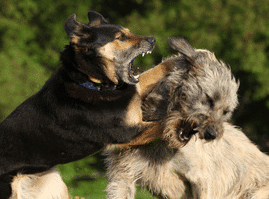
Dog play often mimics fighting and can sometimes look rougher than it really is. Most dog play begins with the “play bow.” Vocalization can be a normal part of dog play and should not be confused with aggression. In fact, the worst dog fights don’t tend to be as loud as some heavy play sessions.
Playing dogs are loose and flowing. They switch places as bottom and top dog biting each other around the neck and head without breaking the skin.
Fighting dogs are stiff, rigid and focused. As the fight escalates, the dogs bite hard enough to create bleeding wounds. Depending on the determination of the dogs involved, dog fights can continue until one dog concedes or is killed.
Dog fights occur for many reasons. Play can escalate into a fight if one dog becomes too aggressive. Fights occur over food, territory, jealousy over owner attention, protection of an owner and redirected aggression, when a dog senses a threat he cannot get to and attacks another dog that happens to be close by.
Intervening
Most dog fights between socialized dogs will not last more than 30 to 60 seconds. A properly trained dog should respond to a reliable recall command. If he does not then intervention should be considered. It should be noted that yelling, hitting and kicking generally ignites further rage between the combatants and rarely will help end a fight.
| Intervention Technique | Aggressive Response % |
|---|---|
| Hitting or Kicking | 43% |
| Grabbing dog by the neck | 26% |
| Water Spray | 20% |
| Shouting “No” | 15% |
| Leash Correction | 6% |
The following should go without saying. NEVER physically get in the middle of two dogs that are fighting. In the heat of battle, your dog only knows one thing — bite anything and everything that is in the way even their owners.
When breaking up a fight remain as calm as possible. Spray the dogs with a garden hose if available. Aim for the eyes and nose of the more aggressive dog. Pepper spray or a fire extinguisher may work to halt a fight but, they can also create severe damage to eyes, skin and mucous membranes. I do not recommend these two unless the fight is life threatening to one or both of the fighting dogs.
Loud high-pitched noises such as an air horn, car or house alarm may work but are less likely if the dogs are fiercely embattled in an intense fight.
Placing a large enough object in-between the dogs may separate them or throwing a blanket over the dogs may break their focus on each other for a moment.
Physical intervention is dangerous. If both owners are present and no other methods are available then simultaneously grabbing each dog by the hind legs elevating and pulling backwards while circling in a way that prevents the dog from twisting and biting the hand that feeds it can work.
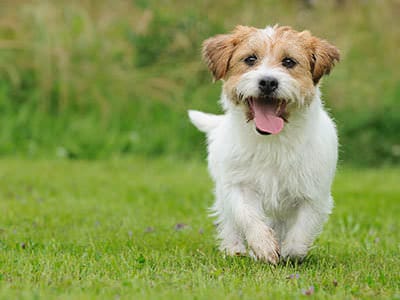
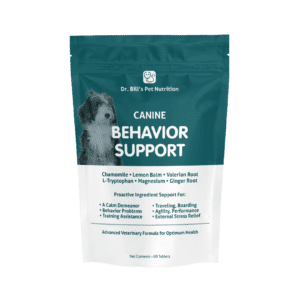

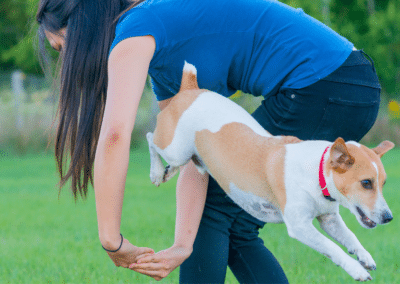
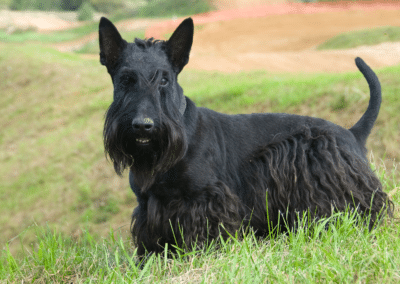
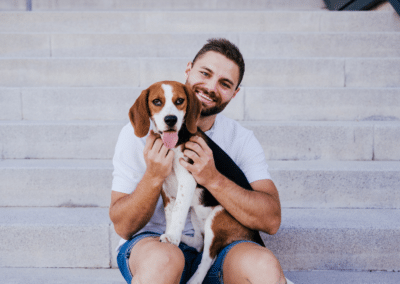
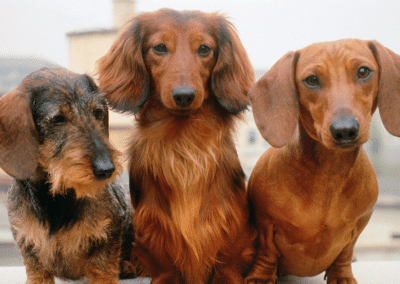


0 Comments